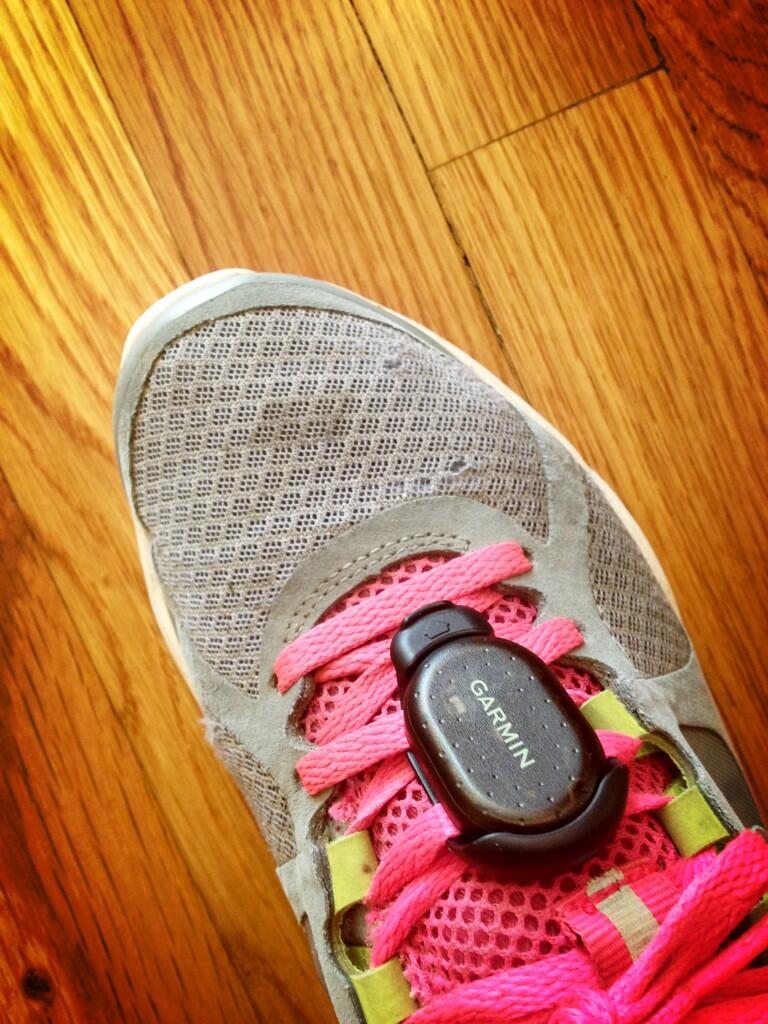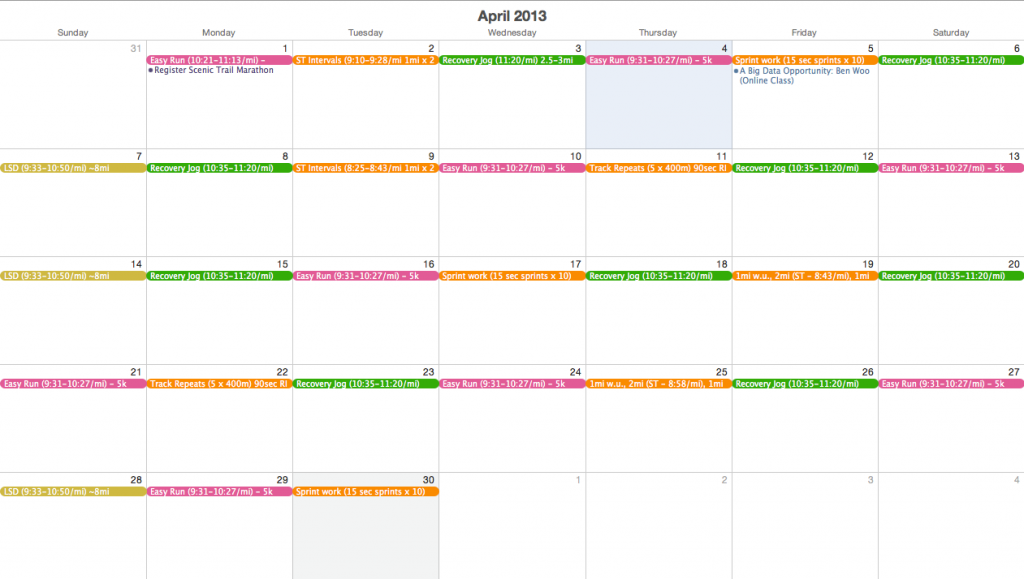Lessons Learned from Running Everyday
A follow up to Tips for Running Everyday and Is it Bad to Run Everyday?
I started running everyday on December 30, 2011 and I did it because one of the milestones we have on Smashrun is a 100-day streak. At the time, I knew that a running streak could help develop training consistency because running everyday creates momentum.
…the more you run, the more chances you have at improving it, because you get constant instantaneous feedback
Of course, there are drawbacks. The most prominent being the repetitive impact forces on your knees, which is only made worse by the lack of rest days. There are ways to increase recovery periods and techniques or training patterns that can reduce chances of developing knee injury, but they require structure and discipline.
With experience, running everyday can be good, but it’s worth your while to know that most of the advantages derived from running streaks can be just as easily acquired from running frequently enough like five to six times a week.
Simply put, the more you run, the more chances you have at improving it, because you get constant instantaneous feedback. Frankly, the biggest benefit of running everyday is your increased awareness of all the different systems that play a central role in running efficiency.
Over time, you might develop interest in breathing techniques, proper form, optimal turnover rate, or pacing strategies. You start to care about these things because you quickly realize where you fall short and, if you’re running everyday, you’ll need to address your shortcomings in order to stay injury free.
Here’s a quick rundown on what I learned over the course of 536 days of running… and still counting.
You Can Run and Still Travel
- Running is an excellent excuse to explore. Use it to find the best trails, check out new neighborhoods, and even get acquainted with a new city.
- Just don’t plan any hard runs. Stick with easy runs and recovery days when you’re on the road.
- If you can, run before you travel, especially, if you’re about to spend a lot of time in confined spaces like in a plane or a bus. It’s good for your immune system and can prevent restlessness during long trips.
- You can survive with one pair of shorts if it’s 100% polyester because the material is thin enough for a quick wash in the sink and hang dry overnight.
- Two sweat wicking shirts can last you six days if you alternate. You won’t smell great, but it won’t be as bad as if you wear the same shirt on the fourth day.
- Unless we’re talking sub-zero temperatures and really cold windchills, you can usually get away with never wearing sweatpants.
- If you’re traveling international, don’t pack your running clothes in your checked luggage, in case you get stuck in between flights. Especially, if you’re on a streak.
Quality Training is Possible with Running Everyday
- I ran Maratón de Santiago while running everyday! And took 20 minutes off my last marathon time.
- Design your own training plan and balance all hard runs with recovery.
- Do consistent speedwork, but with longer breaks of 3-4 days in between.
- Include steady state runs, which is just under your tempo pace, but still much faster than your easy pace. It’s a good solution for moderate speedwork and it’s great for endurance. It can also help improve control at faster speeds, while being less taxing than a traditional tempo.
- Vary your terrain if and when you can. Run off-road!
- Cross-train on easy days, not on recovery days.
- And when you do, focus on core stability. It has a direct correlation with stride efficiency. Many people associate their core with their abs, but it also includes your hip stabilizers. A lot of beginner runners who get hurt have weak hips. You can test yourself to find out whether or not it’s something you should keep in mind while running.
- When it’s summer, don’t continue your usual training load when the temperature picks up. Start low, keep the distance shorter than your usual, and build back up. You need to get acclimated, which can take up to a week. Run when the sun is low in the sky or run in an area that’s shaded during the day.
- If weight loss is your goal, you’re more likely to lose weight if you include longer runs than if you only run very short distances, even everyday.
Recovery Should Always Be Easy
- Do easy runs at an easy pace. If you run it too hard, you’re adding to your muscle tears instead of fixing them. The same applies to recovery runs.
- Use treadmills to ease back into it if you’re just getting over a really tough run like a Cooper Test or any other type of baseline fitness test.
- Down weeks are the best! A down week is basically a low-mileage week – try running only half of your usual weekly mileage – I also tend to cut back on speedwork. Think of it as routine rest and recovery.
- Alternate between running at the same time everyday and spacing them out by running earlier or later the following day. For example, you can run every morning at 7am, but follow a hard 7am run with a 7pm run the next day.
- Short, slow distance runs are perfect for learning proprioceptive cues to improve your stride.
Running Gear

- You don’t need special socks for running everyday or compression sleeves although one research suggests that it can improve performance at certain aenerobic and aerobic thresholds while another implies that it might be psychological – if you think it’ll work, then it might. I’m about to test whether or not it can successfully reduce muscle soreness during recovery.
- You can usually run in shorts year round. I don’t even own sweatpants and I ran around in Vermont during winter. Of course, what you wear when it gets cold really depends on your winter.
- I run with FR 610 and a 405CX. I love my watches because they give me cues while doing speedwork, but they’re not necessary. You can run with an app and just as easily wear a SpiBelt.
- If you frequently get spikes in your heart rate data, you’ll need an electrode gel.
Other Lessons Learned While Running Everyday
- Eat sensibly and cook for yourself. It’s way more fun, anyway.
- Taking a multi-vitamin can help you keep your energy level high throughout the day. Of course, eating lots of greens like collards, arugula, spinach, brussel sprouts, and kale helps too.
- Whey Protein speeds up recovery periods, but eating protein-rich vegetables or lots of beans and legumes works just as well, if not better.
- Creatine can improve performance during speedwork, but you don’t need much and you don’t necessarily have to follow the loading phase.
- Stuff your shoes with crumpled up newspaper to dry it after a rainy run.
- You can train yourself to not eat before long runs under 2 hours so you can do them right when you wake up.
- You can also train yourself to not drink water for 10km up to 10mi, except in the summertime.
- Don’t run after lunch. Not even two hours after. Unless you’re not prone to stitches or cramps then you can probably do it.
- If you’re thinking of having a nice cold beer immediately after a hard run, drink a tall glass of water first. Otherwise, you’re asking for a headache later.
- I’ve never been seriously sick at any point during my streak. Nothing that lasted more than a day. Nothing. Of course, this probably doesn’t apply to everyone on a streak so it’s not a fool-proof plan for staying healthy. Look at it this way, regular aerobic activity can boost your immunity, but overdoing it will do the opposite, so be careful with toeing the line.






Thanks for this. I’m on day 244. I can tell you have been there. You have given me lots to think about. BTW I am running through the Canadian winter. One thing I have been doing is increasing distance slowly. I have done long runs up to 30km. And, I started with my recovery runs at a minimum of 1km in the first 100 days. During the 200s I am on 2km minimum. At 300 I’ll switch to 3km. I am looking forward to day 1,000 and a minimum of 10km a day.
Danny, that’s an incredible goal to have! I can’t even imagine the challenges you’ll face along the way. I really like your plan of a minimum-km rest day. I haven’t yet tried to structure my off days with minimum mileage, but it’s not a bad idea. I might give it a go next month. I try to do something a little different every month, try new ways of learning more about myself as a runner. This month, I’m tracking my Heart Rate Recovery after every run and then I think I’ll switch to tracking my resting heart rate every morning next month 🙂